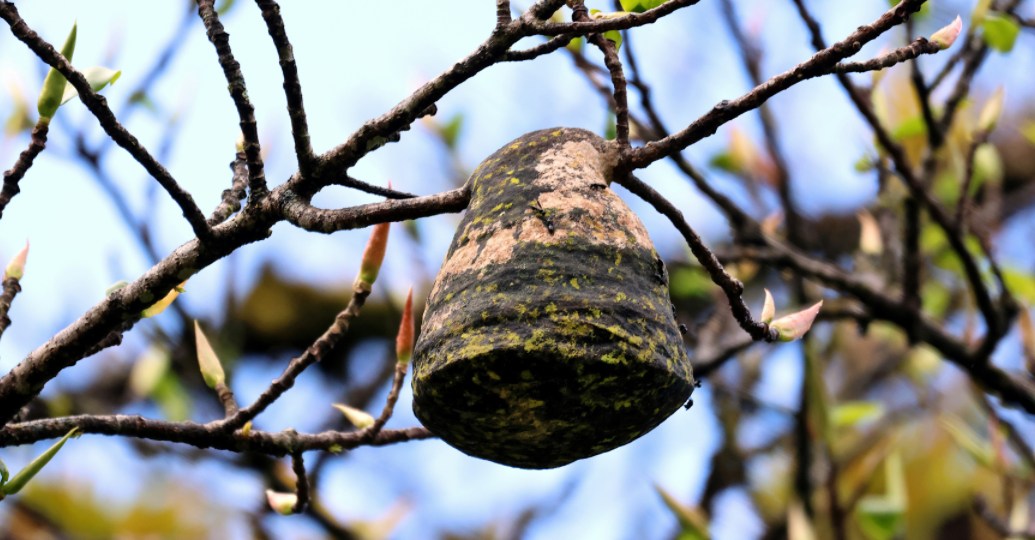Wasps are a common summer nuisance, especially for those who enjoy spending time outdoors. Whether you’re relaxing in your backyard, hosting a barbecue, or simply enjoying nature, the presence of wasps can quickly turn a pleasant experience into a stressful one. To tackle this problem, many people have turned to various methods to deter these stinging insects, with one of the most popular being the use of a wasp nest decoy. But do these decoys actually work? Let’s dive into how they work, whether they are effective, and what other strategies can help you keep wasps away.
Understanding Wasp Behavior
Before we explore whether a wasp nest decoy can work, it’s essential to understand a bit about wasp behavior. Wasps are territorial insects, particularly during the warmer months. They build nests in sheltered locations such as under eaves, in tree branches, or in sheds. Once a nest is established, the wasps become protective of it, aggressively defending their territory from other wasps and perceived threats.
The key behavior that nest decoys aim to exploit is the territorial nature of wasps. A wasp will typically avoid areas where another colony has already established itself. So, in theory, if a wasp sees a fake nest that looks like an occupied territory, it may be deterred from building its own nest nearby.
How Wasp Nest Decoys Work
Wasp nest decoys are typically made from plastic or other lightweight materials and are designed to mimic the appearance of a real wasp nest. The idea behind using these decoys is that wasps are naturally cautious and will avoid areas where they perceive competition from other colonies. These decoys are often hung in areas where you don’t want wasps to build a nest, such as on the eaves of a house, in trees, or near outdoor seating areas.
The Effectiveness of Wasp Nest Decoys
Now, let’s address the most important question: Do wasp nest decoys actually work?
Partial Success
In some cases, wasp nest decoys can be somewhat effective. When a wasp colony comes across a decoy, it may be fooled into thinking the area is already occupied, as wasps tend to avoid competing colonies. This can make the area less attractive for them to nest. However, the effectiveness of these decoys varies depending on several factors.
The Size and Realism of the Decoy
For the decoy to work, it must look convincing. A poorly made, small, or unrealistic decoy may not be enough to deter wasps. A large, well-made decoy, on the other hand, is more likely to trick wasps into thinking the area is already claimed. The decoy should resemble an established nest, as wasps are more likely to avoid a site with an active, thriving colony rather than an empty or unoccupied location.
Location and Timing
The placement of the decoy also plays a crucial role in its success. Hanging the decoy too early or in the wrong spot may not be effective. Wasps are usually active in late spring and early summer, so it’s essential to install the decoy before the start of their nesting season. Additionally, hanging the decoy near areas where wasps tend to build nests, such as near porch eaves or garden sheds, will increase its effectiveness.
Not a Foolproof Method
While decoys can work in some situations, they are not a guarantee that wasps won’t establish a nest nearby. In some cases, if the local environment offers few suitable places for nesting, wasps may still choose to build their nest in the area despite the presence of a decoy. Wasps are also highly adaptable, and some species may not be as deterred by decoys as others.
Additional Strategies for Wasp Prevention
If you’re concerned about wasps and looking for additional ways to keep them away, here are some complementary strategies:
- Seal Entry Points
Wasps can enter your home or shed through small cracks and gaps. Make sure to inspect your property for any potential entry points and seal them up, especially during the late spring when wasps start to look for nesting sites. - Use Wasp Traps
If you already have a wasp problem, traps can help reduce their population. These traps attract and capture wasps using bait, reducing the number of pests in your vicinity. - Maintain Clean Outdoor Spaces
Wasps are attracted to food, especially sugary substances. If you’re hosting a picnic, barbecue, or party, be sure to clean up crumbs, spills, and discarded food promptly. Consider using a citronella candle or essential oils like eucalyptus or peppermint, which can repel wasps. - Remove Existing Nests
If you’ve already discovered a wasp nest on your property, it’s crucial to remove it safely. However, wasp nest removal should only be done by professionals, especially if the nest is large or in a hard-to-reach location. Attempting to remove it yourself can lead to dangerous stings. - Use Wasp Repellent Sprays
For a quick fix, wasp repellent sprays can be used to eliminate or deter wasps. These sprays can be applied directly to a nest or around the perimeter of areas where you spend time outdoors.
Conclusion
While wasp nest decoys can be a helpful tool in keeping wasps at bay, they are not a foolproof solution. Their effectiveness depends on factors like the size and realism of the decoy, its placement, and the behavior of the local wasp population. For best results, use the decoy in combination with other preventive measures like sealing entry points, maintaining a clean environment, and using wasp traps.
Ultimately, keeping wasps away requires a multi-faceted approach. By understanding wasp behavior and employing various strategies, you can enjoy a wasp-free outdoor experience without the sting.


